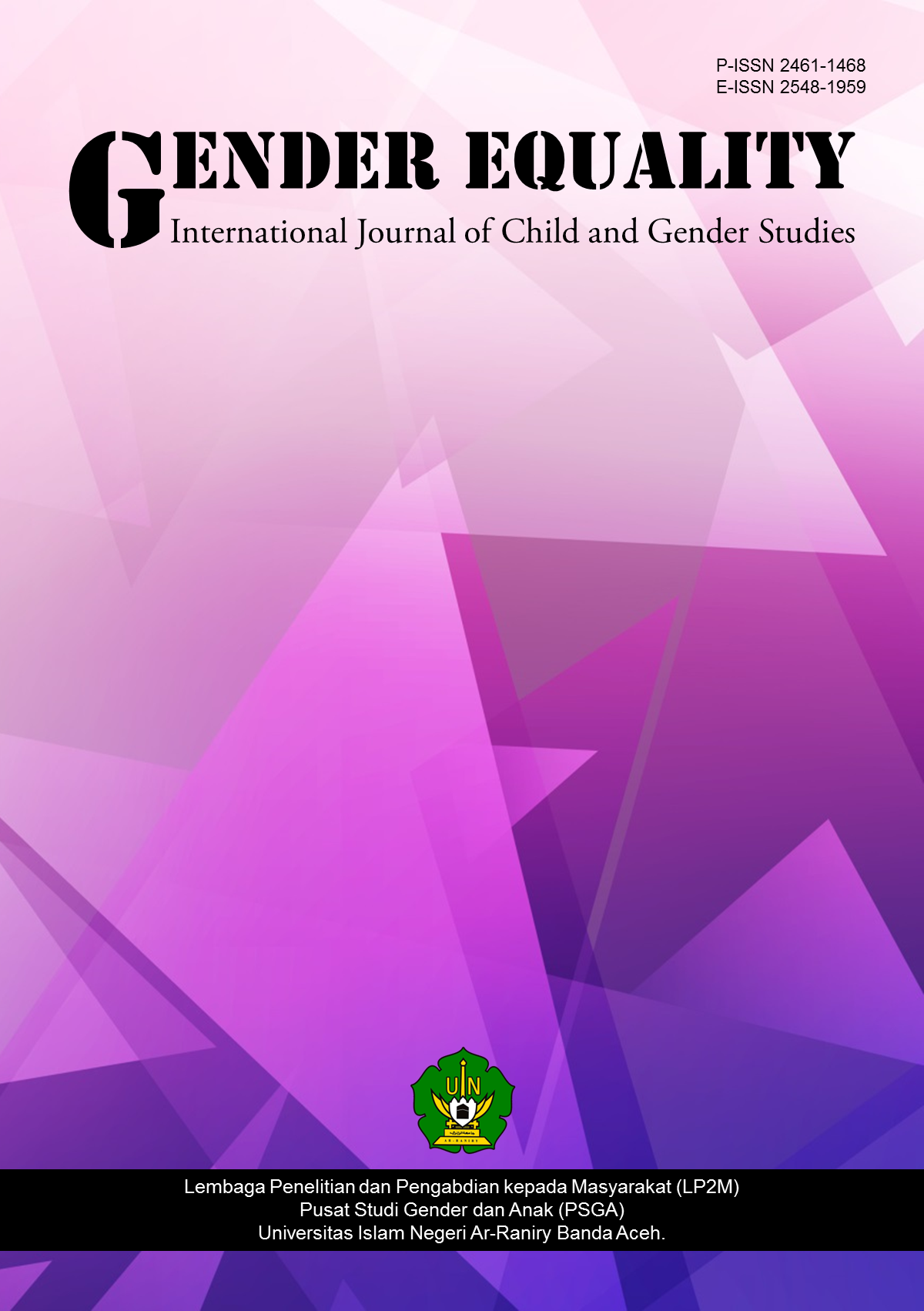VIDEO FAIRY TALES AS A MEDIA FOR DISASTER MITIGATION IN PRIMARY SCHOOL AGE CHILDREN
DOI:
https://doi.org/10.22373/equality.v7i1.8613Keywords:
fairy tales, videos, elementary school age children, disaster preparednessAbstract
Every time a disaster occurs, one of the groups that becomes victims is children, both as victims of death and victims of injuries. Children who have survived a disaster are the group that suffers the most, they suffer the trauma of the disaster and a deep sense of loss. Therefore, disaster mitigation for children, especially primary school age children, is very important so that they are prepared to face the threat of disasters. The vast territory of Indonesia with a variety of disaster threats faced demands creative ideas so that disaster mitigation messages reach Indonesian children, one of which is the use of fairy tale videos. This study aims to find out the extent to which fairy tales can be used as a disaster mitigation media in developing the readiness of primary school children to face the threat of disaster. This research applies library research methods or literature review to the results of studies and relevant scientific publications. From this study, it shows that video media can significantly influence children's knowledge and attitudes. Disaster mitigation messages that are packaged in the form of fairy tale videos are able to attract the interest of children who are ultimately expected to build their preparedness in facing the threat of disaster.References
Aeni, Q., Beniarti, F., & Warsito, B. E., (2015). “Pengaruh Pendidikan Kesehatan Dengan Metode Pemutaran Video Tentang PHBS Cuci Tangan Terhadap Pengetahuan dan Sikap” dalam Jurnal Keperawatan, Vol. 7, No. 02, Edisi September 2015: 1-5.
Al Aziz, G., Fitriyah, C., & Finali, Z., (2020). “Tayangan Video Animasi “Si Noval” Untuk Mendukung Interaksi Sosial Siswa Sekolah Dasar” dalam Scholaria: Jurnal Pendidikan dan Kebudayaan, Vol. 10, No. 03, Edisi September 2020: 207-216.
Al-Qudsy, M., & Nurhidayah, U. (2010). Mendidik anak Lewat Dongeng. Yogyakarta: Madania.
Arsyad, A. (2006). Media Pembelajaran. Jakarta: PT. Raja Grafindo Persada.
Badan Nasional Penanggulangan Bencana. (2017). Tanggap Tangkas Tangguh Menghadapi Bencana. Jakarta: Pusat Data, Informasi dan Humas Badan Nasional Penanggulangan Bencana.
Danandjaya, James. (1986). Foklor Indonesia. Ilmu Gosip, Dongeng, Dan lain-lain. Jakarta: Pustaka Grafitipress.
Daryanto. (2012). Media Pembelajaran. Bandung: PT. Sarana Tutorial Nurani Sejahtera.
Huck, Charlotte., Hepler, S., Hickman, J., & Kiefer, B. (1987). Children Literature in the Elementary School. USA: Holt, Rinehart and Winston Inc.
Mardalea, B., Yuliantini, N., & Anggraini, D., (2019). “Pengaruh Media Video Terhadap Kemampuan Menulis Puisi Kelas V Sekolah Dasar Se-Kota Bengkulu” dalam Jurnal Riset Pendidikan Dasar, Vol. 2, No. 2, 2019: 120-125.
Miarso, Y., dkk. (1986). Teknologi Komunikasi Pendidikan Pengertian dan Penerapannya di Indonesia. Jakarta: CV Rajawali.
Musfiqon. (2012). Pengembangan Media dan Sumber Pembelajaran. Jakarta: Prestasi Pustaka.
Nabang si Penunggang Paus. (https://dongengbencana.wordpress.com/nabang-si-penunggang-paus/), diakses 18 November 2020.
Nurjanah., Sugiharto, R., Kuswanda, Dede., Budi Prasodjo, Siswanto., & Prasetyo, KRT Adikoesoemo. (2011). Manajemen Bencana. Bandung: Alfabeta.
Republik Indonesia. (2007). Undang-undang Republik Indonesia Nomor 24 Tahun 2007 Tentang Penanggulangan Bencana
Rosidah, Tur Cholifah., & Rusminati, Susi Hermin. (2007). “Mendongeng Sebagai Media Menumbuhkan Karakter dan Nilai Budaya Bangsa Pada Siswa Sekolah Dasar” dalam Jurnal Figur, Vol. 01, No. 01, Edisi Januari 2007: 40-50.
Sadiman, A. S., dkk. (2006). Media Pendidikan: Pengertian, Pengembangan dan Pemanfaatannya. Jakarta: PT. Raja Grafindo Persada.
Solehati, T., Kosasih, C. E., & Lukman, M., (2019). “Pengaruh Pendidikan Kesehatan “Sarapan Sehat” Dengan Media Video Terhadap Pengetahuan dan Sikap Siswa” dalam Dinamika Kesehatan Jurnal Kebidanan dan Keperawatan, Vol. 10, No. 01, Edisi Juli 2019: 440-447.
Suciana, F., & Permatasari, D., (2019). “Pengaruh Edukasi Audio Visual dan Role Play Terhadap Perilaku Siaga Bencana Pada Anak Sekolah Dasar” dalam Jurnal of Holistic Nursing Science, Vol. 6, No. 2, 2019: 44-51.
Syukur, F. (2005). Teknologi Pendidikan. Semarang: RaSAIL.
Warsita, Bambang. (2012). “Kreatifitas Dalam Pengembangan Video/Televisi Pembelajaran”dalam Jurnal Teknodik, Vol. XVI No.1, Edisi Maret 2012: 85-99.
Yudha, A. (2007). Cara Pintar Mendongeng. Bandung: Mizan Media Utama.
Downloads
Published
Issue
Section
License
GENDER EQUALITY: International Journal of Child and Gender Studies allows the author(s) to hold the copyright and to retain the publishing rights without restrictions. Authors who publish with this journal agree to the following terms:
- Authors retain copyright and grant the journal right of first publication with the work simultaneously licensed under a Creative Commons Attribution License that allows others to share the work with an acknowledgment of the work's authorship and initial publication in this journal.
- Authors are able to enter into separate, additional contractual arrangements for the non-exclusive distribution of the journal's published version of the work (e.g., post it to an institutional repository or publish it in a book), with an acknowledgment of its initial publication in this journal.
- Authors are permitted and encouraged to post their work online (e.g., in institutional repositories or on their website) prior to and during the submission process, as it can lead to productive exchanges, as well as earlier and greater citation of published work.



